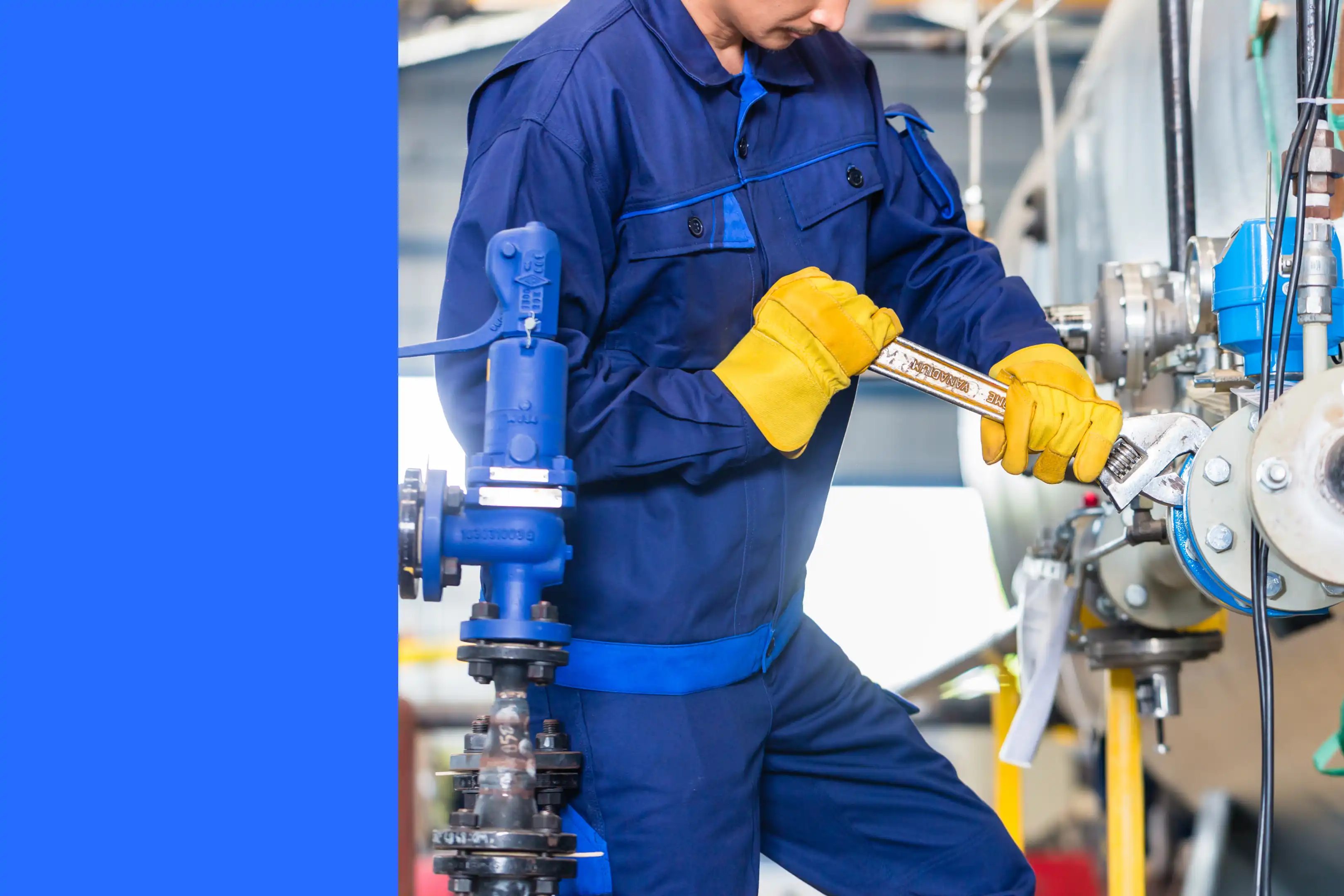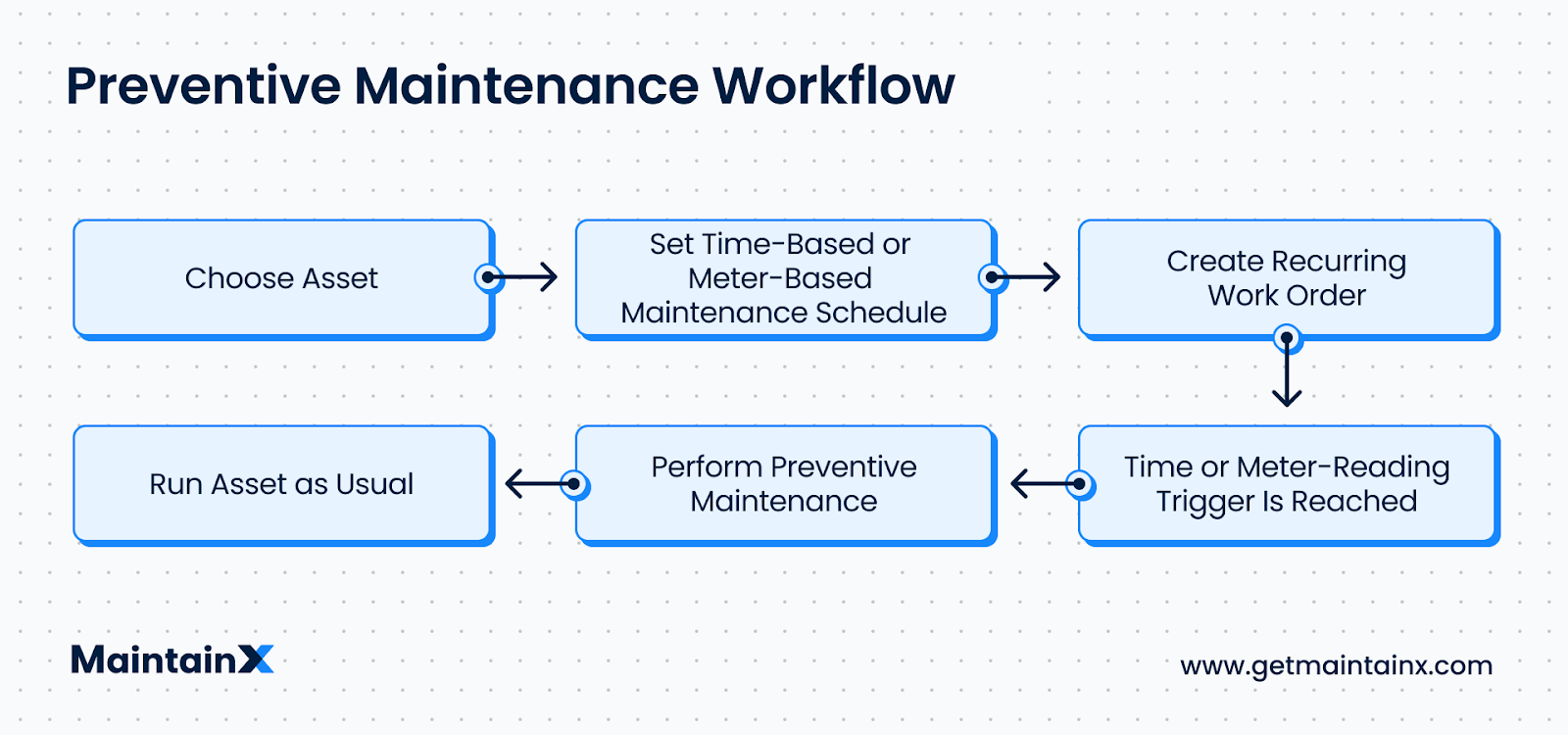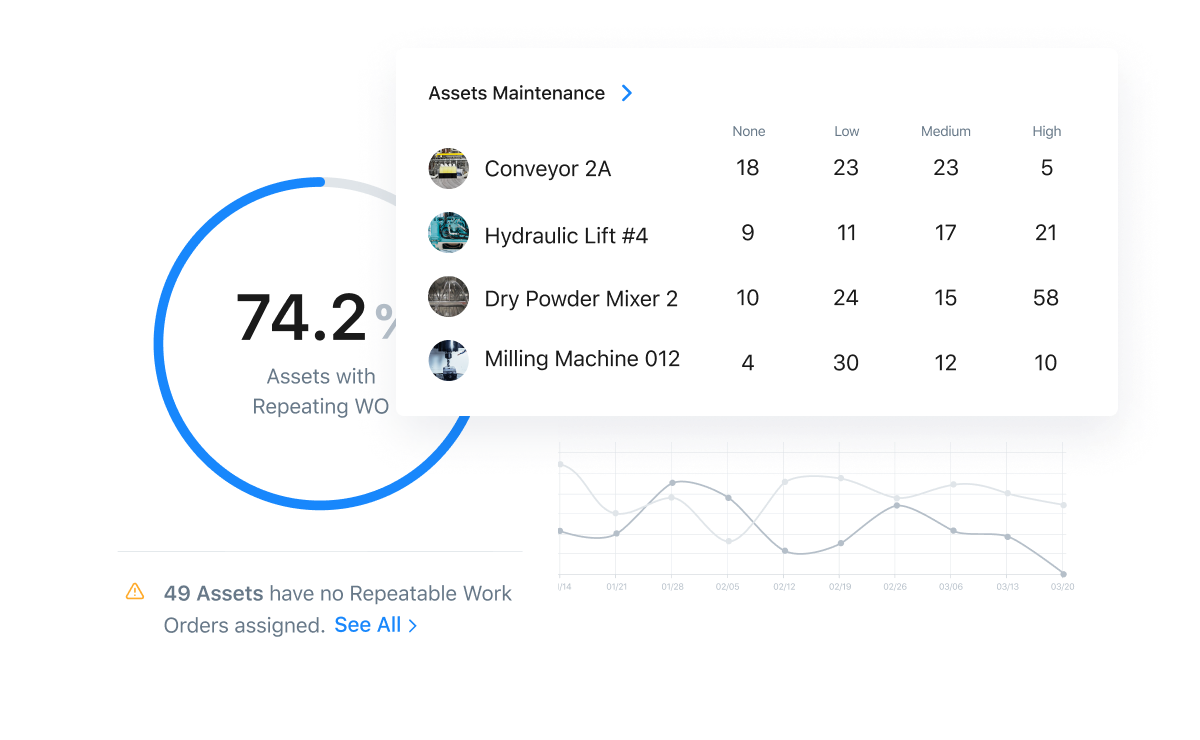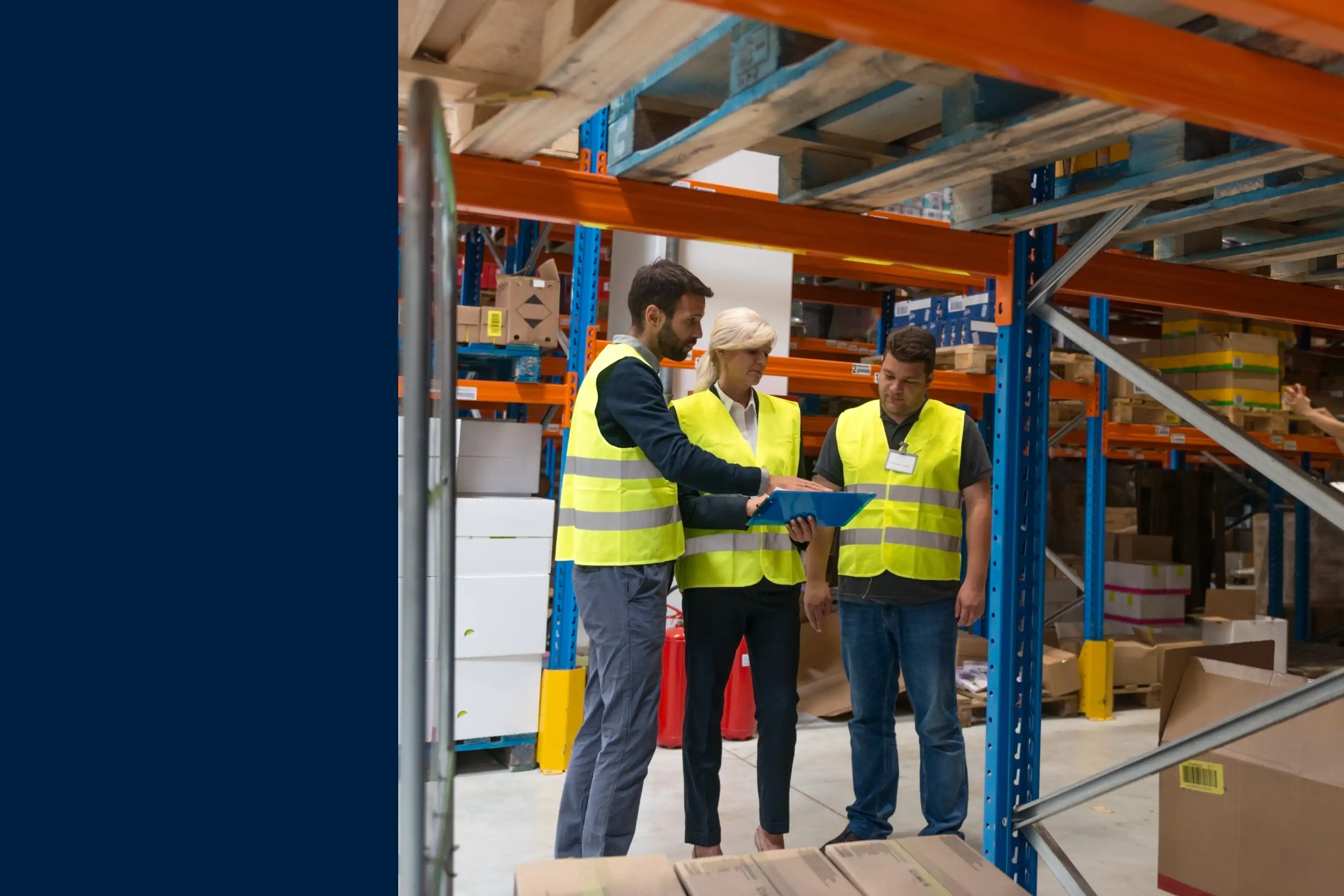
Browse any computerized maintenance management system (CMMS) provider's website long enough, and you might walk away believing something that isn't true: the positioning of preventive maintenance (PM) as good and reactive maintenance (RM) as bad.
It’s true that preventive maintenance has major benefits—studies show that PM-heavy companies save an average of 12 to 18 percent. But maintenance leaders should consider several factors when choosing a strategy.
Manufacturers don't build machines to last forever, so it's impossible to practice preventive maintenance 100 percent of the time. And for some equipment, it costs more money to prevent breakdowns than to fix them.
While modern technology has made PM much more affordable and accessible, success comes down to finding the right balance of RM to PM. (The average “magic formula” is one-fourth reactive maintenance to three-fourths proactive maintenance, depending on your industry.)
Let's break down the pros and cons of preventive maintenance vs. reactive maintenance, and see why the smartest teams use both strategies together.
Key takeaways
- Achieving the right balance of preventive and reactive maintenance is key; a common target is an 80/20 split, dedicating most of your resources to proactive work.
- A solid preventive maintenance program keeps equipment running longer, workers safer, and eliminates expensive surprise breakdowns.
- Choosing the right type of preventive maintenance (such as time-based, usage-based, or condition-based) depends on the specific asset's criticality and failure patterns.
- Using a CMMS like MaintainX helps you digitize, schedule, and track all your preventive maintenance tasks to ensure nothing is missed.
What is preventive maintenance?
Preventive maintenance is scheduled maintenance work performed at regular intervals to keep equipment running and prevent unexpected breakdowns. This proactive approach addresses small issues before they become costly failures.
Unlike reactive maintenance, where you fix assets after they break, preventive maintenance involves routine inspections, cleaning, lubrication, and part replacements. The goal is to move your team from "firefighting" mode to a controlled, planned maintenance schedule that extends asset life.
Types of preventive maintenance
Not all preventive maintenance is the same. Picking the right approach for each asset saves you time and money. The four main types include:
- Time-based maintenance: Tasks scheduled at fixed intervals
- Usage-based maintenance: Tasks triggered by equipment operation hours
- Condition-based maintenance: Tasks scheduled based on asset health indicators
- Predictive maintenance: Tasks scheduled based on predictions about when an asset will fail using analytics
Time-based maintenance
This is the most straightforward type of PM, where tasks are scheduled at fixed time intervals, such as weekly, monthly, or annually. For example, you inspect your facility's fire extinguishers every six months or service an HVAC unit every spring. This method is easy to schedule but can lead to unnecessary maintenance if an asset is used less than expected.
Usage-based maintenance
Usage-based maintenance triggers tasks based on equipment operation, such as run hours, production cycles, or mileage. A common example is changing the oil in a vehicle every 5,000 miles. This approach is more accurate than time-based PM for assets with variable usage, as it aligns maintenance directly with actual wear and tear.
Condition-based maintenance
Condition-based maintenance (CBM) involves monitoring an asset's condition to determine when maintenance is necessary. Technicians use methods like vibration analysis, oil analysis, or thermal imaging to detect signs of decreasing performance or impending failure. You perform maintenance only when data shows it's needed, which helps prevent both unexpected failures and unnecessary work.
Predictive maintenance
Predictive maintenance (PdM) is an advanced form of CBM that uses sensor data and analytics to predict when an asset will fail. By analyzing trends and patterns, you schedule maintenance at the optimal moment. This strategy maximizes asset uptime and minimizes maintenance costs but requires an investment in monitoring technology and data analysis capabilities.
Preventive maintenance vs. reactive maintenance: which is the best maintenance strategy?
Organizations maintain hundreds or thousands of valuable assets. Following a preventive maintenance schedule for every piece of equipment can become overwhelming, especially without proper CMMS software to manage the workload.
This leads some companies to practice reactive maintenance instead:
Reactive maintenance definition
Reactive maintenance is exactly what it sounds like. Something unexpected happens with a machine, and you react. Here's the technical definition:
Reactive Maintenance (RM) is a maintenance procedure that addresses problems as they arise. Chance observations, equipment malfunctions and equipment failures precipitate RM activities.
Also called "run to failure," this maintenance strategy does not involve scheduling routine inspections, changing of parts, and other proactive tasks. For example, changing a light bulb that just went out is a form of reactive maintenance. You didn't set a reminder to change the bulb every six months—you responded to the situation on the fly.
Reactive maintenance falls into two general categories: Emergency maintenance and corrective maintenance:
Emergency maintenance often involves responding to an urgent safety or production issue. In such instances, emergency maintenance must be prioritized over usual activities until the equipment is fixed. Unfortunately, this results in costly downtime and reduced productivity. Emergency maintenance can be a minor inconvenience or a huge problem, depending on how valuable the faulty equipment is to production.
Corrective maintenance occurs when a worker happens to notice faulty parts during a non-related maintenance procedure, like an inspection or walkthrough. The parts are then either replaced or worked on so the machine can resume optimal performance.
Here are the main advantages and disadvantages of preventive maintenance vs. reactive maintenance.
At a glance: Running a reactive maintenance program
A good rule of thumb is to reserve RM for components that are inexpensive, easily replaceable, and unlikely to result in expensive downtime.
For example, say the cost of downtime for a particular asset is $500, and its monthly PM cost is $800. In this instance, the company would actually waste resources by assigning PM work orders. It's important to keep in mind that your employees’ time counts towards the cost of running PMs.
Situations like this actually benefit from a reactive approach. That said, running purely reactive maintenance programs has more downsides than benefits:
Cons:
- Higher long-term costs: Unexpected delays during can result in late orders, damaged reputations, and premium charges for emergency repairs
- Shorter equipment life: Assets that are "patched up" deteriorate faster than those that are maintained proactively
- Safety risks: Unexpected failures can result in injuries. Emergency maintenance also puts technicians under pressure, increasing the likelihood of accidents
- Maintenance backlogs: Emergency repairs disrupt planned work, creating a cycle of reactive firefighting

At a glance: running a preventive maintenance program
Managing preventive maintenance across hundreds or thousands of assets can seem overwhelming, as systems like paper checklists and spreadsheets become unmanageable at this scale. Modern maintenance software is essential for tracking maintenance schedules, work orders, and asset performance across multiple locations.
Historically, the primary disadvantages of PM have been a) high-cost CMMS systems and b) learning curves required to benefit from using them.
However, modern maintenance solution providers have tackled both issues. MaintainX has built powerful preventive maintenance software specifically for easy use on smartphones. With MaintainX in your PM toolbox, it's easy to enjoy the benefits of PM, like:
Pros:
1. Greater savings
Just by reducing downtime, companies with strong preventive maintenance programs save more money than those that don't. On average, an hour of unplanned downtime costs a facility around $25,000. For larger organizations, this can skyrocket to more than $500,000.
2. Enhanced safety
The more often technicians check assets, the less likely safety hazards become. Companies with preventive maintenance schedules see fewer surprise breakdowns and safety incidents.
3. Longer equipment lifespan
Preventive maintenance schedules ensure assets are running according to the manufacturer guidelines. As you replace poorly performing parts, assets keep running smoothly for longer. Longer equipment lifespan also means you’ll save on expensive replacements.
4. Increased productivity
Studies show poor maintenance strategies can reduce production capacity by up to 20 percent. Modern preventive maintenance solutions allow managers to digitize essential equipment details, assign recurring repair assignments, and review asset history from the convenience of their desktops and smartphones.
Maintenance teams can also get mobile alerts, photograph equipment failures, and sign off on completed tasks instantly. Streamlined PM systems and less downtime mean your team gets more done with less stress.

MaintainX asset maintenance history
5. Less energy consumption
Poorly maintained assets consume more energy than those operating in normal conditions. PM allows maintenance teams to address energy-robbing issues quickly, resulting in smaller utility bills.
6. Lower insurance premiums
Many insurance providers offer lower premiums for companies that practice and document their preventive maintenance routines. If equipment breaks down less often, you'll make fewer expensive claims.
The final word on balancing preventive and reactive maintenance
Choosing between preventive and reactive maintenance isn't all-or-nothing. Successful maintenance teams achieve an optimal balance, dedicating most resources to preventive work while accepting that some reactive maintenance is inevitable.
Paper-based systems and complex legacy software makes it more difficult for frontline workers to put preventive maintenance strategies into action, which is where modern CMMS platforms can help. MaintainX is a mobile-first maintenance software that lets your team manage work orders, track assets, and optimize maintenance schedules from anywhere in your facility. Companies like Southeast Power have successfully used MaintainX to launch comprehensive PM programs from scratch.
Ready to move beyond firefighting mode? Book a demo to see how MaintainX can help your maintenance teams keep operations running more efficiently.
FAQs on preventive maintenance strategies
What are the four main types of preventive maintenance for asset-intensive operations?
Manufacturing and industrial facilities typically use four preventive maintenance strategies: time-based scheduling (tasks at fixed intervals), usage-based triggers (based on operating hours), condition-based monitoring (using asset health data), and predictive analytics (forecasting failures with sensor data). Maintenance managers combine these approaches based on factors like equipment criticality.
How do maintenance managers in manufacturing determine the optimal preventive vs. reactive maintenance balance?
Maintenance managers analyze each asset's criticality to production, downtime costs versus maintenance costs, and safety implications of failure. Teams typically give critical production equipment typically a heavy preventive focus, while allowing non-critical, low-cost components run to failure. The industry standard generally targets an 80/20 preventive-to-reactive ratio.
What key elements should maintenance teams include in their preventive maintenance program?
Successful preventive maintenance programs require comprehensive asset inventories, standardized maintenance schedules, detailed work order procedures, clear technician assignments, and performance tracking through CMMS software. Regular program reviews and continuous improvement based on asset performance data drive long-term success.






.webp)



.webp)